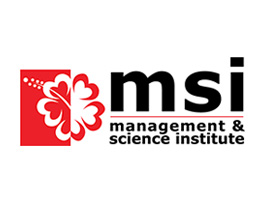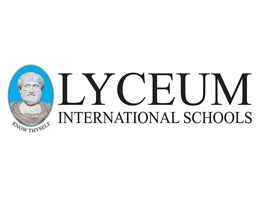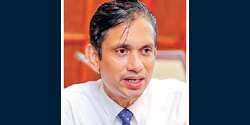Manike Mage Hithe Vs Why This Kolaveri Di
 Sri Lanka needs to have a different shift in thinking and govern the nation. Now the country is witnessing a situation in which there is no such long-term plan for the coming years. The same can be seen with the strategies in international marketing as well. We have always discussed creative economy for many years. But still, there is no policy discussion on this in the country. It is worthwhile to understand the meaning and implications of the creative economy (sometimes referred to as the creative industry).
Sri Lanka needs to have a different shift in thinking and govern the nation. Now the country is witnessing a situation in which there is no such long-term plan for the coming years. The same can be seen with the strategies in international marketing as well. We have always discussed creative economy for many years. But still, there is no policy discussion on this in the country. It is worthwhile to understand the meaning and implications of the creative economy (sometimes referred to as the creative industry).
John Howkins, the author of ‘The Creative Economy: How People Make Money from Ideas,’ refers to a range of economic activities that are concerned with the generation or exploitation of knowledge and information. Howkins divides the creative economy into fifteen sectors, which are: 1) Advertising; 2) architecture; 3) Art; 4) Crafts; 5) Design; 6) Fashion; 7) Film; 8) Music; 9) Performing Arts; 10) Publishing; 11) Research and Development; 12) Software; 13) Toys and Games; 14) TV and Radio; 15) Video Games. The concept of a ‘creative economy’ is not new at all.
It is better to discuss the creative economy with an example of “Nollywood”. The Emergence of ‘Nollywood’ is remarkable and it came into the world picture within 20 years. According to PwC.com “The Nigerian Film Industry (Nollywood) is globally recognised as the second largest film producer in the world. The industry is a significant part of the Arts, Entertainment and Recreation Sector which contributed 2.3% (NGN239biliion) to Nigeria’s Gross Domestic Product (GDP) in 2016. It is one of the priority sectors identified in the Economic Recovery and Growth Plan of the Federal Government of Nigeria with a planned $ 1 billion in export revenue by 2020”.
We have to study the success story of ‘Nollywood’ to see whether we can apply that to our Ranminithanna Film Village which also with more potential. University undergrads In Sri Lanka can conduct a study on ‘Nollywood’ and see the Key Successive Factors (KSF) and modifications in the Sri Lankan context with Ranminithenna. The same scenario can apply to the Music Industry as well. In Sri Lanka, we have witnessed the success story of viral marketing with the glocalisation of the Song of “ Manike Mage Hithe”.
The Manike Mage Hithe cover by Yohani and Satheeshan has exceeded 249 million views and was trending mainly in India and the globe by translating the same into Hindi, Malayalam, Tamil, etc. We have seen that Amitabh Bachchan is one of the most influential actors in the history of Indian cinema. was praised for the Sri Lankan song ‘Manike Mage Hithe’ in his blog. This can be considered one of the historical events in the music industry in Sri Lanka. If you need to “go global” we need to understand the global trends and all environmental factors.
If we analyse trendy songs such as Manike Mage Hithe most of the time it can be seen targeting the new generation/s (Y, Z and Gen Alpha). One decade back from India we can see a song by Kolaveri D which was successful at that time in the globe. Unlike Sri Lanka, at that time it can be seen Indian Higher Education sector taken that as one of the success stories in Viral marketing. The Indian Institutes of Management (IIMs) ranked amongst the topmost business schools in India and Asia conducted some discussions on this with some own case studies. Even in IIM Ahmedabad, there was an hour-long discussion between the professor and students of that class.
Most of the Professors of IIMs - Bangalore, Rohtak and Lucknow - have played the song in class and reflected on the strategies played including viral marketing. Furthermore, the marketing club of IIM Ranchi organised a seminar on campus to study the strategy that has turned the song “Why This Kolaveri “into an overnight rage( Abeysekera,2011). Anyway, the same scenario cannot be observed in the Sri Lankan education system in terms of respecting the creativity of the young generation. I think that is one of the problems that we need to explore more with possible solutions.
The popularity of songs such as Manike Mage Hithe and Why This Kolaveri Di in social media can be considered a message reiterating the power of creativity and innovation with the essence of new technology. It is truly an internet generation that articulated the fashion and trends in the world. There is a responsibility and Mechanisms from the stakeholders in the country to have a proper mechanism to respect the creativity and imagination of our young generation. In that scenario, the role of the ‘Creative Economy” is really important for the country.
The creative economy encompasses careers many of which the music Industry also played a vital part. We have discussed the concept of “creative economy” and its importance to Sri Lanka for decades but could not see any positive feedback from the administrators. ( Refer to the article by Dr W.A. Wijewardena titled “A Creative Economy For SL’s Future Development: Much More To Be Done To Realise The Goal”- https://www.ft.lk/ w-a-wijewardenacolumns/ A-creative-economy-for-SL-sfuture- development-Much-more-to-bedone- to-realise-the-goal/885-716359). We should consider the success story of “Manike Mage Hithe” as one case study for Sri Lanka to think about the importance of the “Creative Economy” with different strategies in coming years.
Professor Nalin Abeysekera
(The writer is a Professor in Management Studies at the Open University of Sri Lanka.
You can reach him at [email protected].)









































.jpg)
.jpg)
.jpg)

.jpg)
.jpg)
